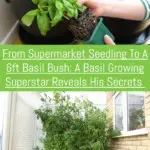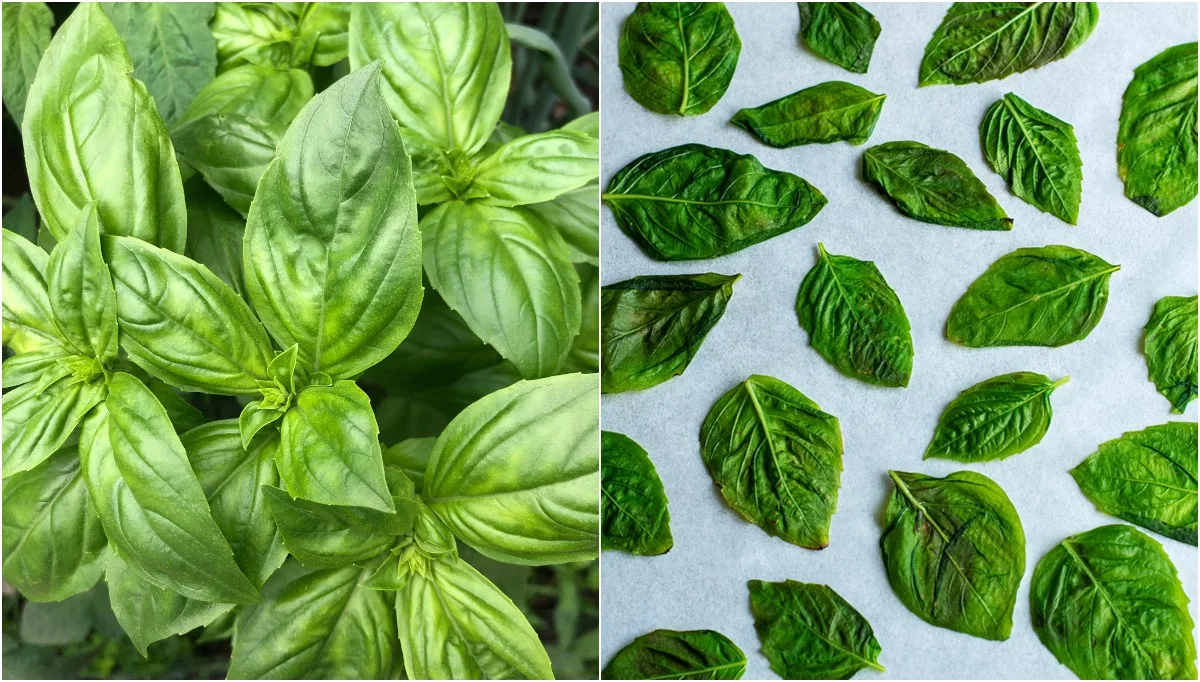
Oh, my friends, I hope you like basil. Like, really like basil because we’re going to share the secret to growing potted basil taller than you are. In the end, the basil reached a monstrous 6ft 5 inches. The best part is it’s relatively easy to do.
Are you intrigued? I thought you would be.
Let’s jump in.
We collaborated with a basil-growing genius (who wishes to remain anonymous – the basil paparazzi is fierce) and had him teach us his mystical basil-growing process so we could pass it on to our readers.
Ultimately, we were shocked to learn how easy it is to do. Everything he taught us makes perfect sense for growing insanely huge basil that will leave you gobsmacked, not to mention with enough pesto to feed an army.
Our Basil Guru attributes his ability to grow massive basil plants to a few simple factors –
- Healthy soil with the right nutrients
- An extensive root system
- Constant access to water
- Direct sunlight and high heat
- The correct pruning method
Now I know what you’re thinking, “But Tracey, that’s what you need to grow anything, whether it’s in a container or not.”
You’re right, but in this case, he got very specific about each of these, and while no one factor is more important than the other, each is imperative in his overall process for growing basil that results in massive bushes.
That’s right; I said bushes.
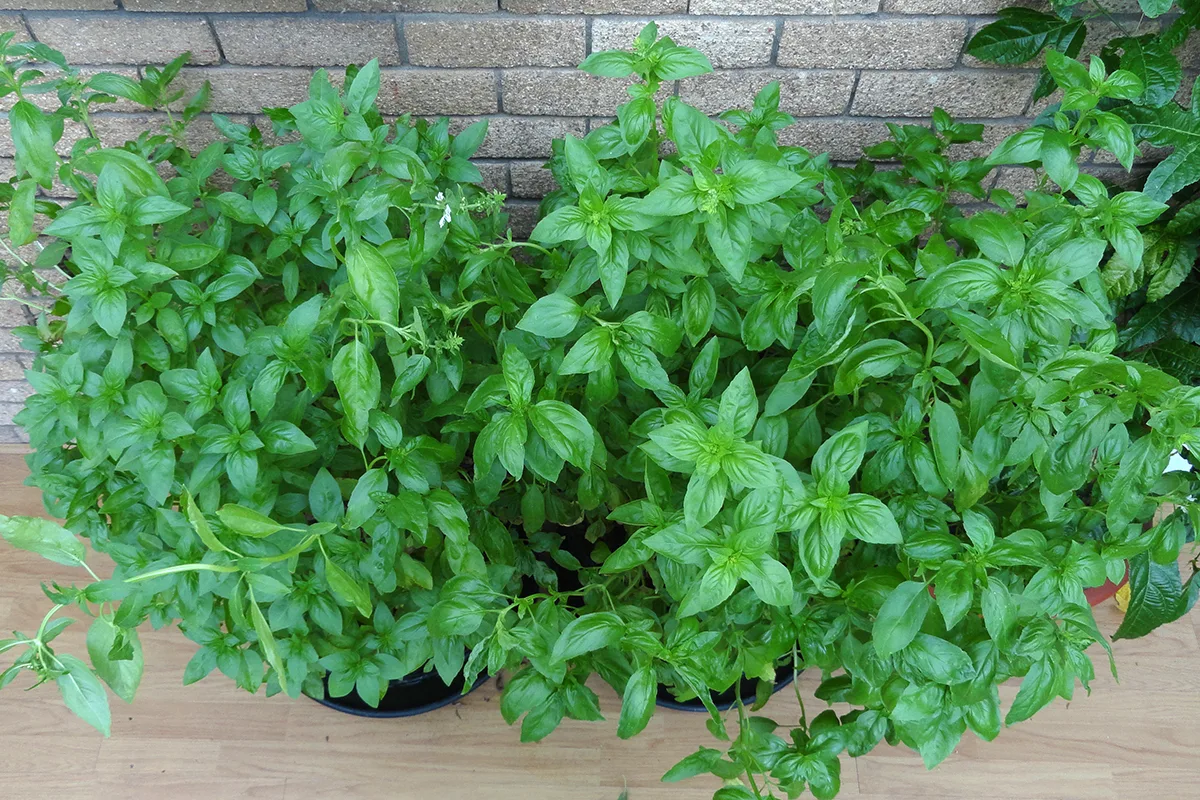
Growing in Containers – Why We Always Get it Wrong
Perhaps the secret to his success is that he got container-growing right.
His method focused on things we normally get wrong when container gardening. Remember back in Chemistry class when we talked about open and closed systems? Or how about homeostasis in Biology class, homeostasis being an equilibrium maintained within a habitat or system?
All these come into play when growing plants in containers, but it’s often difficult to get right until you start thinking about container growing as a closed system.
Homeostasis is much easier to maintain in a large, open system (say, a big vegetable patch in your backyard) than in a smaller closed one (that potted tomato growing on your porch).
If it doesn’t rain for a week, the vegetable patch will be okay. The plants naturally have larger root systems, meaning they have access to more nutrients and water deep in the ground, an open system.
That potted tomato, however, is a closed system, and a small one at that. The root system is limited to the pot size, and the plant only has access to the water and nutrients we add to the system. Naturally, in that tiny closed system, your tomato plant will die if it doesn’t receive water for a week.
If we want to achieve large growth in containers, we must mimic an open system within a closed one to achieve consistency. And our master grower did just that.
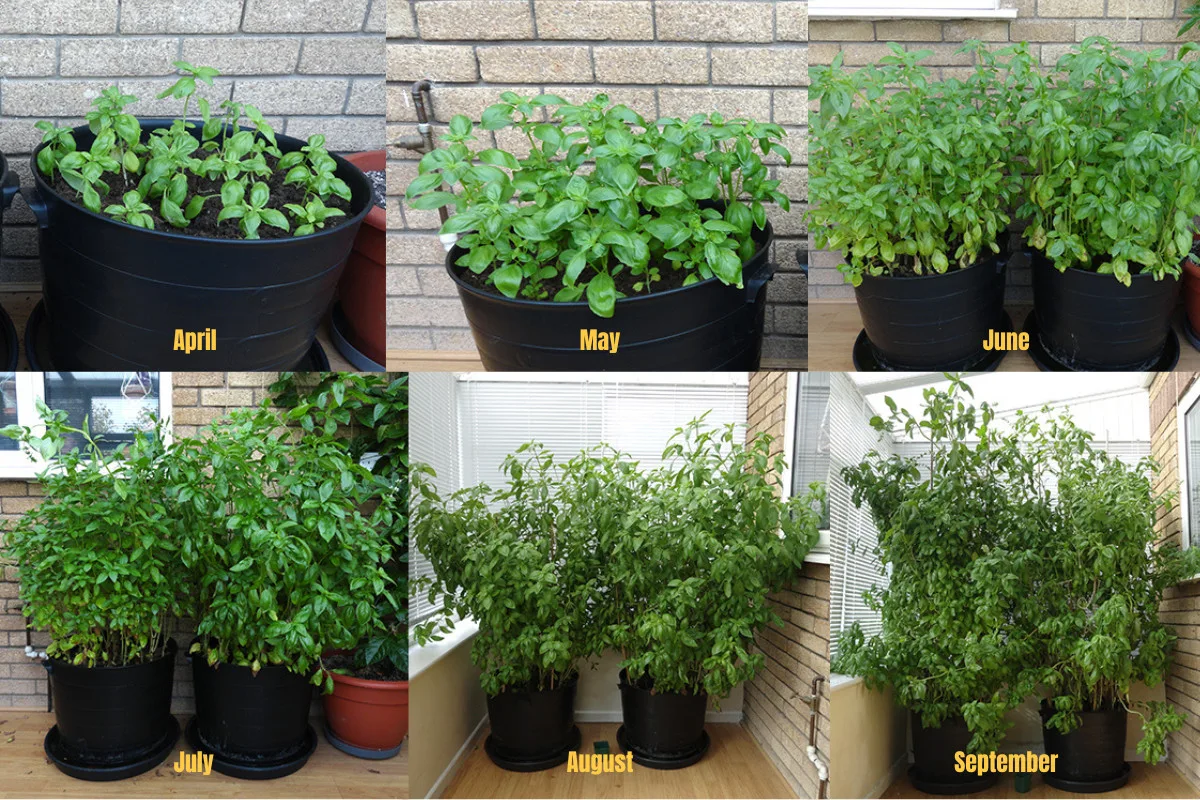
The Entire Process – From Start to Taller-Than-You-Are-Finish
Our expert grows his basil in a sunroom attached to his home. He photographed the entire growing season, from March through September, to show us what that looks like.
And the best part is it all starts with one of those small pots of basil you can pick up in any grocery store.
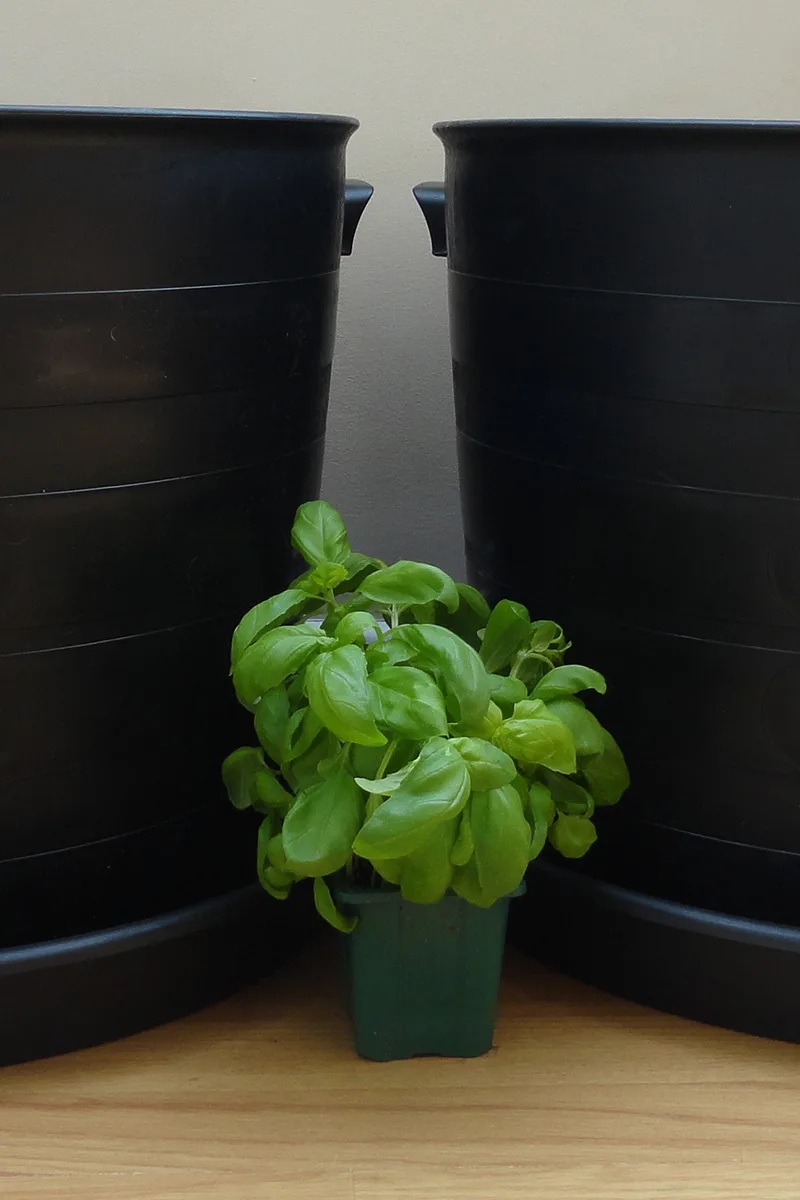
He notes that when you use these, it’s rarely just one plant but many tiny seedlings crammed into a small pot. He grew two pots of basil using the seedlings from just one grocery store pot. More about that later.
About His Growing Habitat
One of the key factors in our grower’s success is the heat and light where he grows his basil. He lives in South Wales, in the UK, and has an enclosed, southern-facing conservatory. During the peak growing season, temperatures easily reach 122 degrees F (or 50 degrees C) inside.
He noted this past year, they had a record-breaking heatwave in the UK, so the temperatures in the conservatory were likely even higher. So far, his highest recorded temperature was around 135 degrees F.
(I know, I’m sweating just thinking about it.)
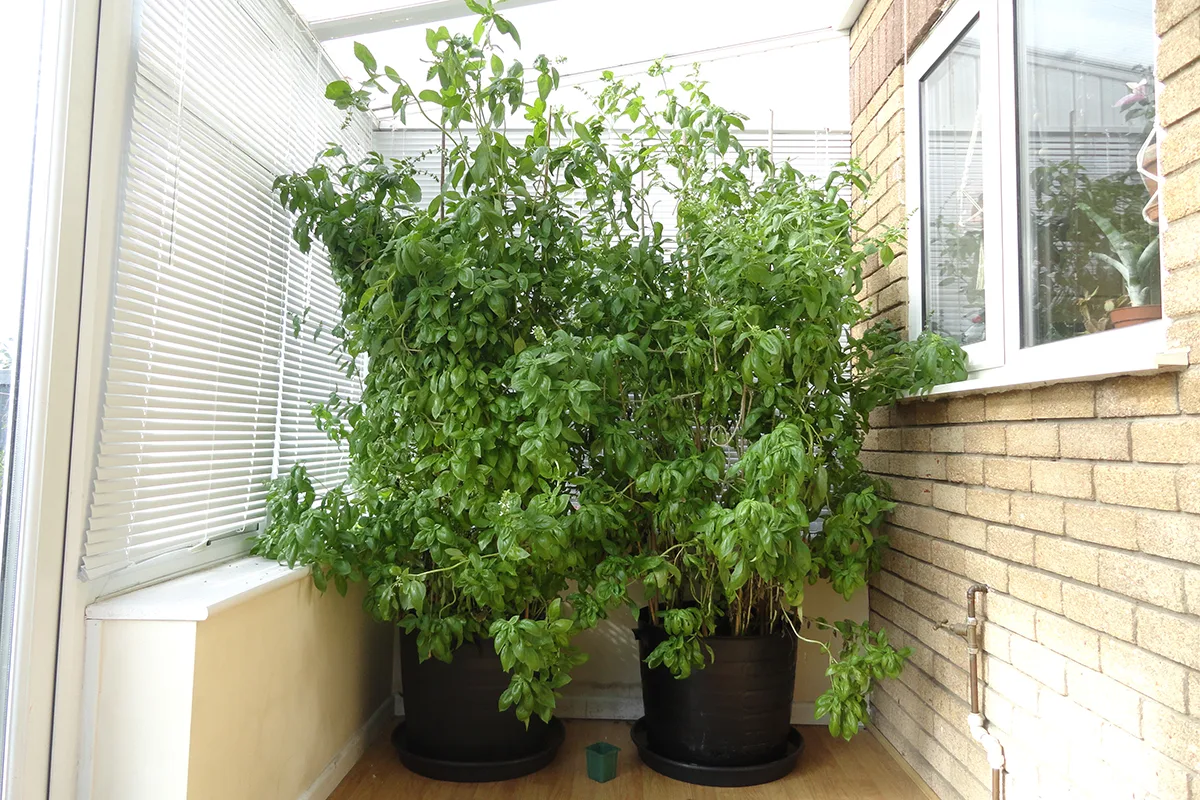
Typically, extreme heat causes plants to slow their growth, as this kind of heat stresses the plant. However, because our grower was so diligent in ensuring the plant had access to water and nutrients, the plants took off instead.
For those of us without a conservatory, recreating these conditions may seem out of reach. Luckily, some well-made and inexpensive pop-up greenhouses are available these days, making it much easier to achieve these hothouse conditions.
Go Big or Go Home
One of the smartest things our grower does is choose the right pot. If you want to grow massive basil plants, you have to allow them to grow massive root systems, which means a really, really big pot. He emphasizes that it should be deep too.
As container gardeners, we’re terrible at knowing how big a pot to use; we usually choose something much too small. When picking out a pot, it’s best to think about what’s below the soil rather than above it.
Generally speaking, a plant will only grow as big as its root system can support.
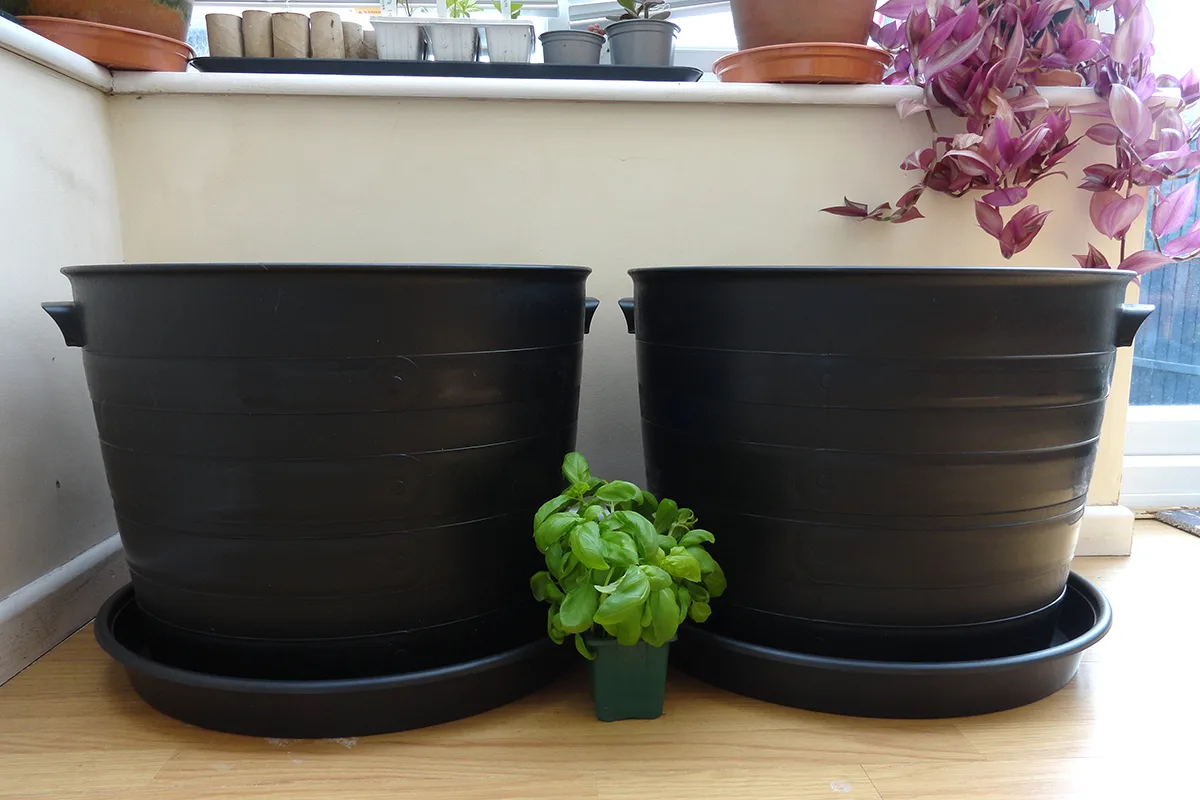
Think about that large maple tree in the park. Everything you see above ground is supported by a root system below ground that’s as big or bigger. Impressive, right?
Keep this in mind when choosing a pot for your basil. (Or anything you choose to grow in containers.) You need something big enough to support a large root system. And remember, depth is important too; opt for a pot that is deeper than it is wide if you’re able.
For reference, the pots he used are 20”W x 15”H x 15.5”D. He purchased them at a popular home goods store in the UK. The rope-handled plastic tubs that you can easily find in feed and hardware stores are a suitable replacement.
To allow the plant to absorb water, he drilled four drainage holes in the bottom of each pot.
He also purchased extra large saucers for the pots to sit in. These are necessary for this growing method as they ensure the plant has a constant water supply in these extreme temperatures.
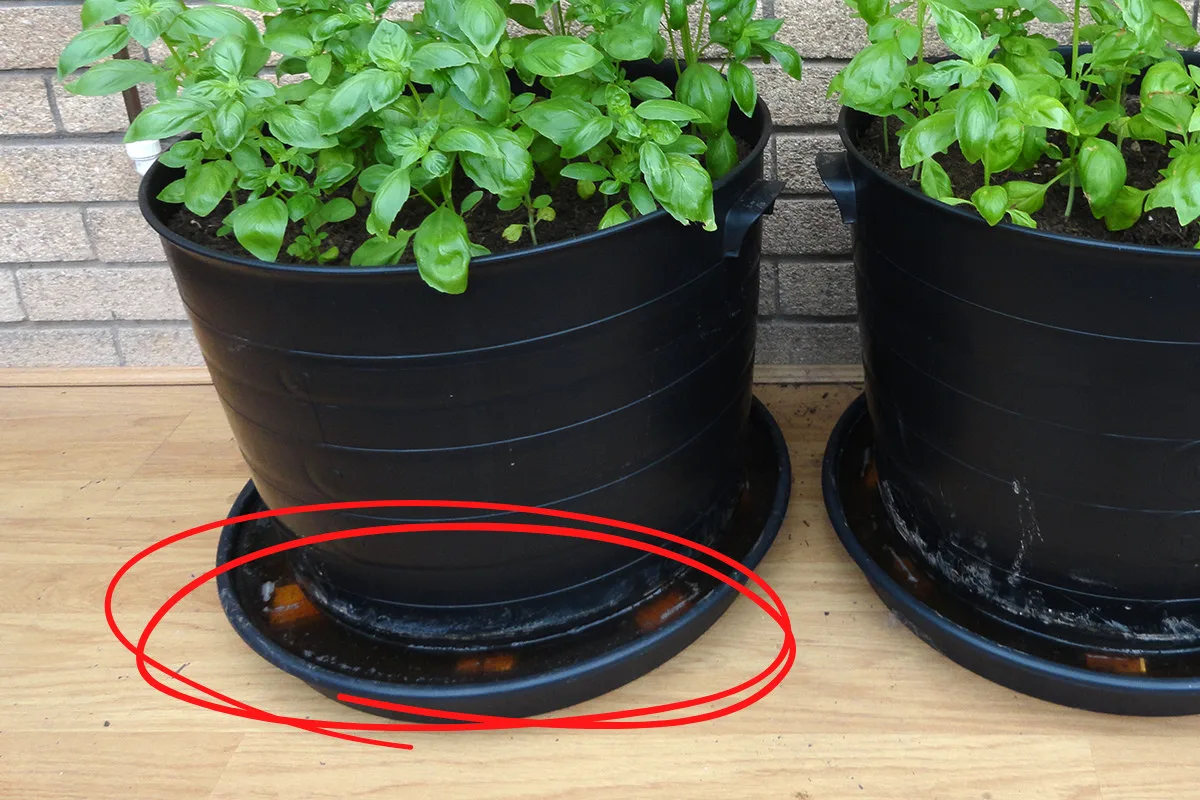
To prevent the pot from sealing to the saucer, he placed several thin strips of wood in the bottom to elevate the pot a bit. We’ll get into watering further on.
Potting Up
One interesting difference in this method is potting up – as in, don’t do it. We’ve learned to start with small pots and pot up as the plants grow; however, if you want massive basil, he suggests you plant your seedlings directly in the large pot.
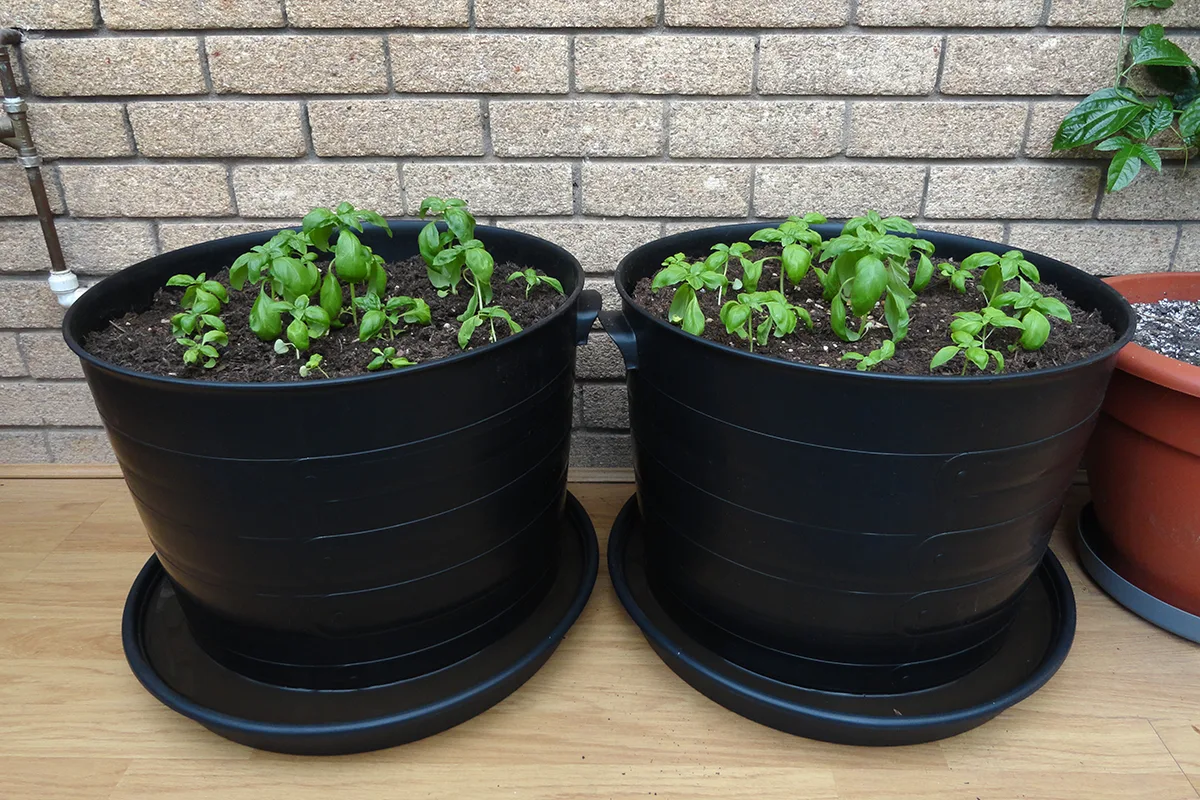
The reasoning behind this is simple – the plants have to search for water in a larger pot, so they develop huge root systems much faster. Having that large, well-established root system in place first allows for more prolific growth aboveground throughout the growing season.
Our Grower’s Choice of Soil Mix
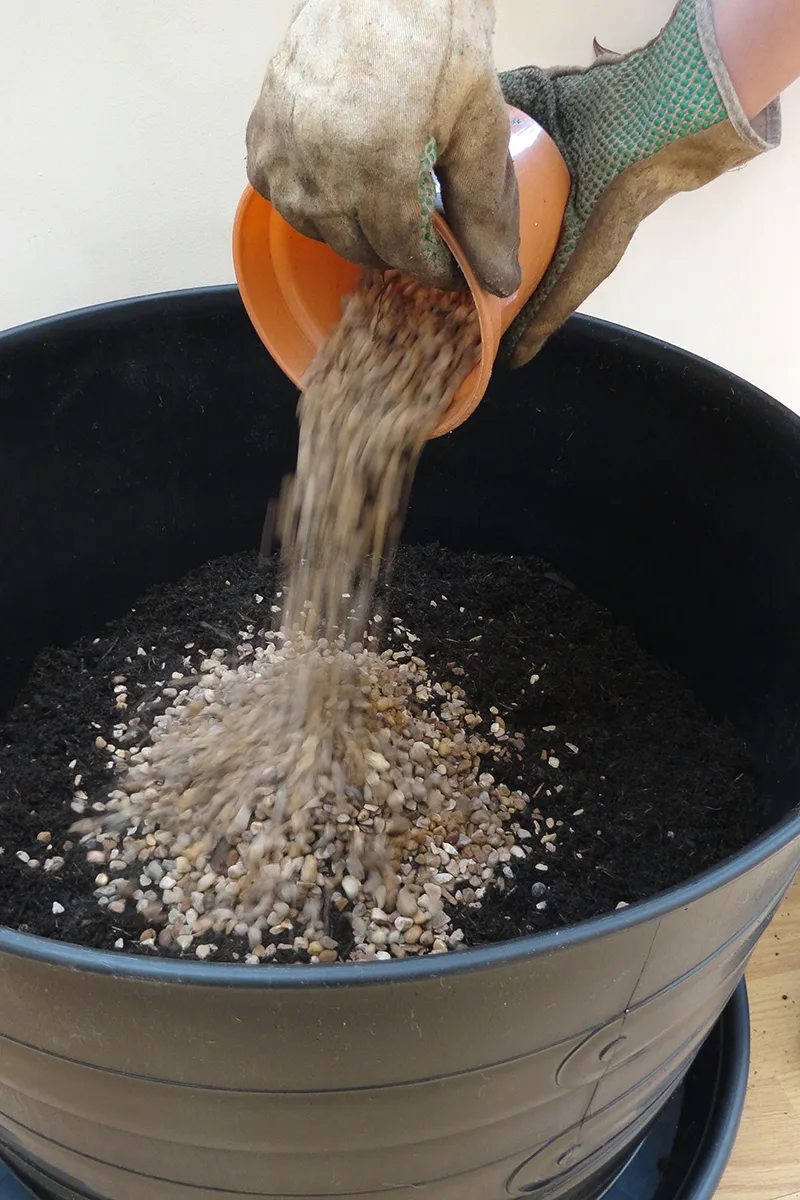
Our basil growing master swears by “nutritious well-draining deep soil.” For this, he uses only two things – peat-free compost and horticultural grit.
He recommends mixing the two at a ratio of 10:1, compost to horticultural grit. He also suggests you alternate small layers of each, mix them thoroughly, and then add another layer to make distributing the two evenly easier.
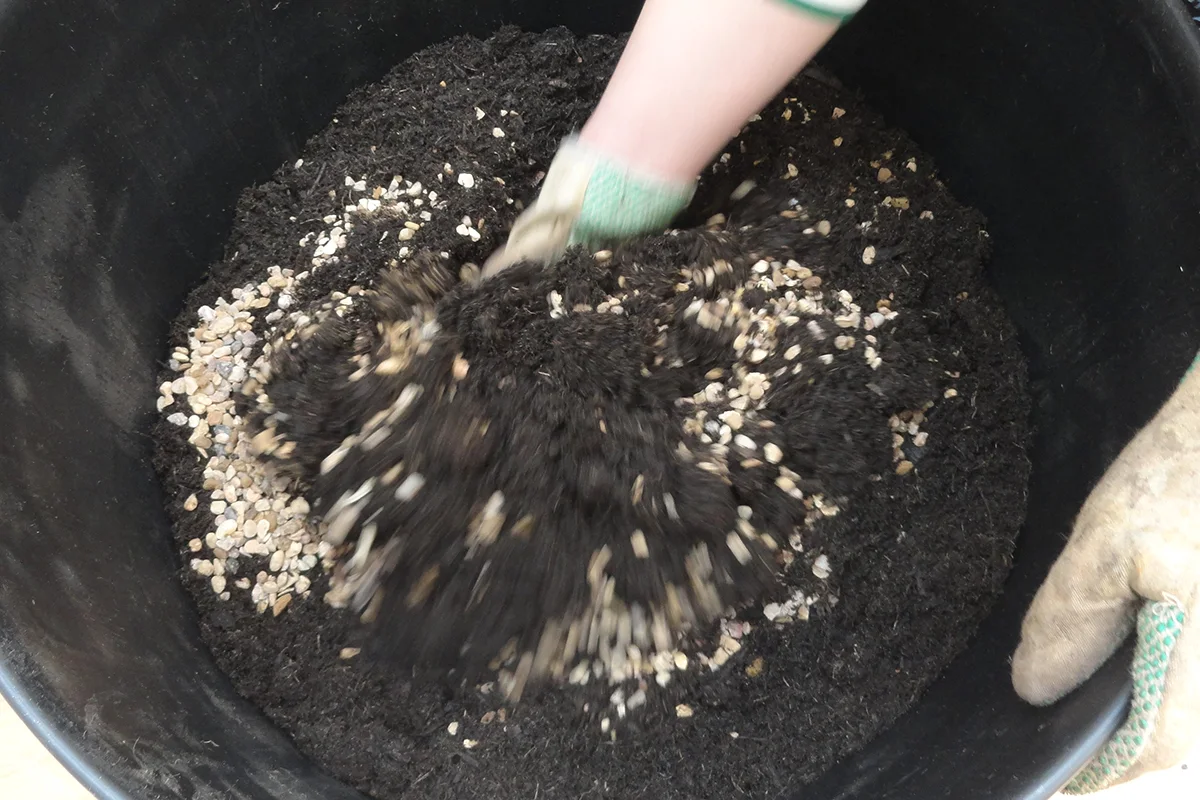
Once the pot is filled with the growing medium, he gently removes the mass of basil seedlings from their tiny pot.
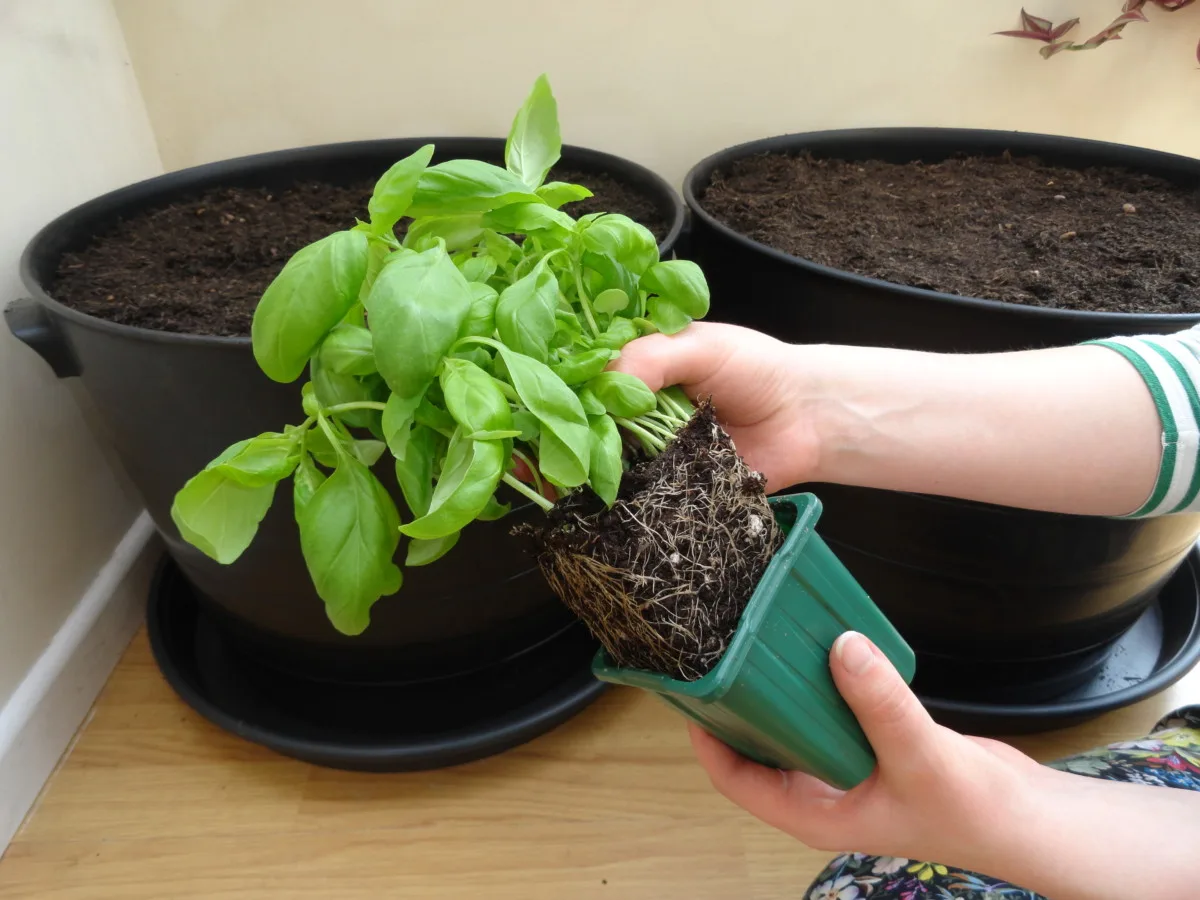
Then comes the careful and tedious work of teasing apart individual seedlings.
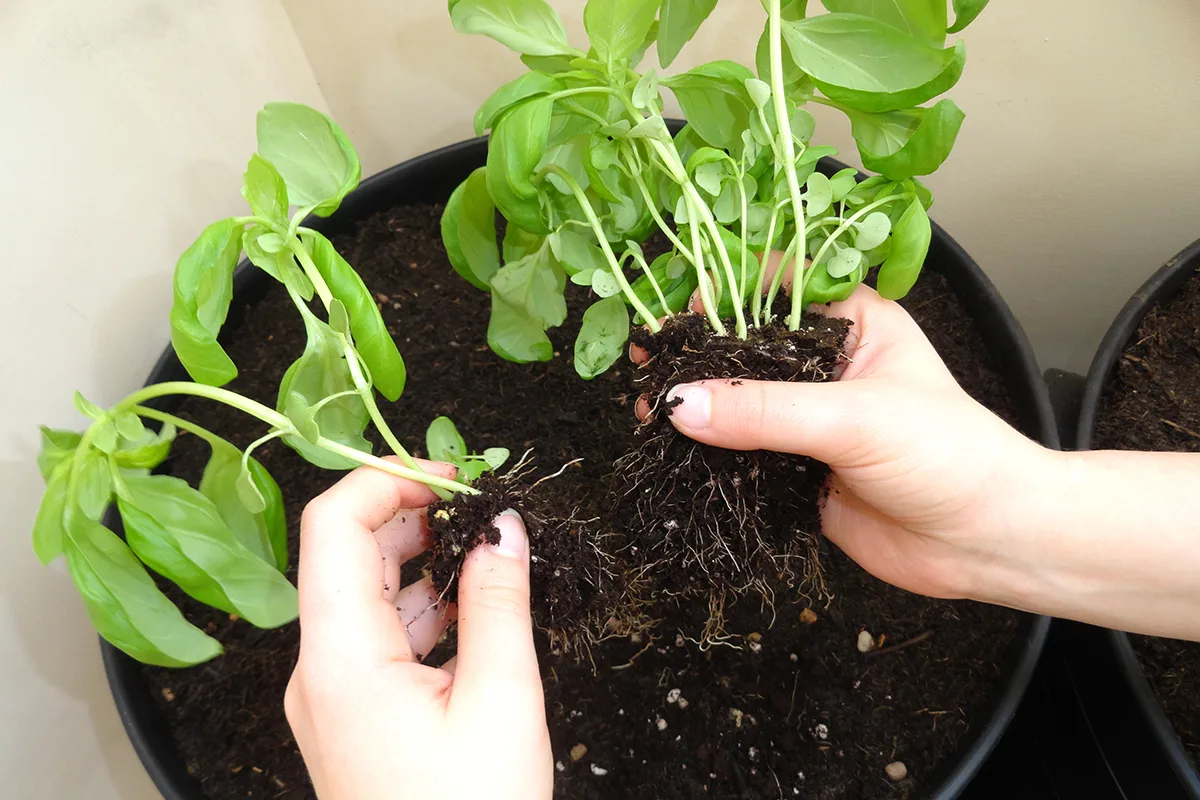
He assures us not to worry if we break apart a few roots in the process as they grow back quickly. However, he stresses the importance of being careful not to snap the small basil stems; once they’ve been damaged, the seedling will die.
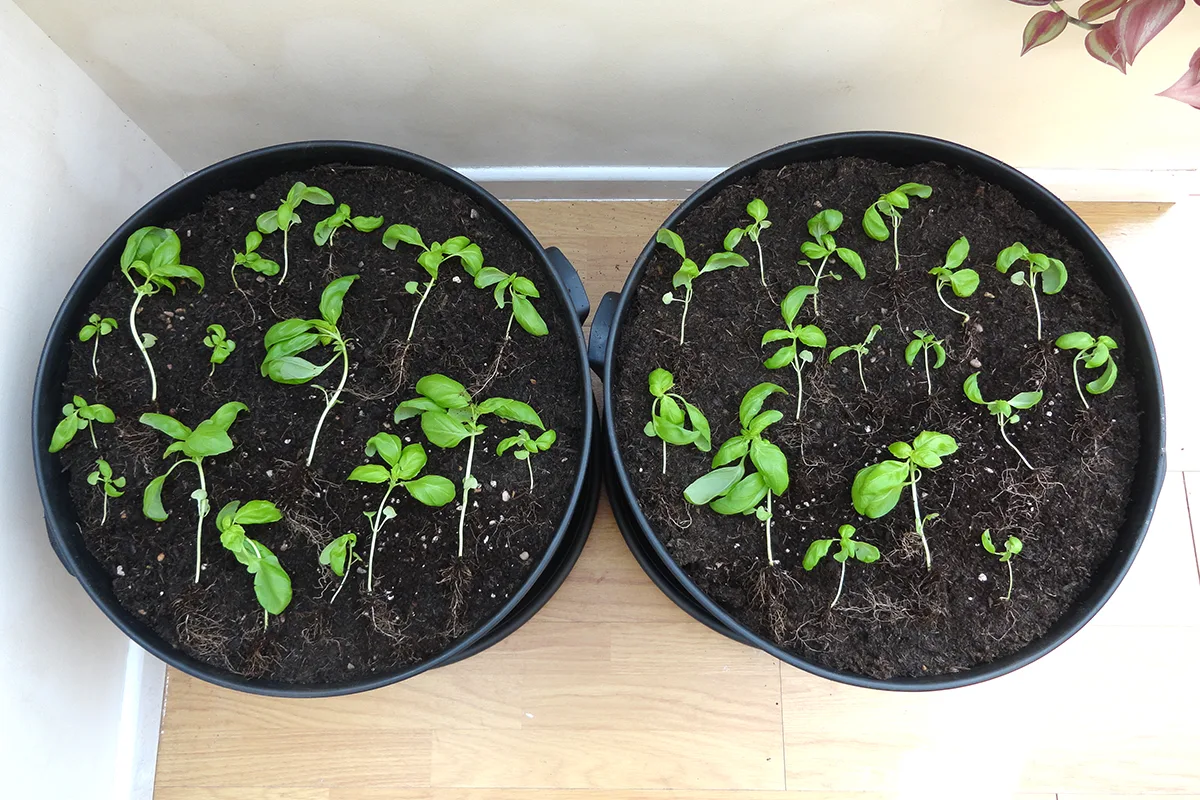
Plant the seedlings in the pot by using your finger to make a hole. Then press the soil firmly around the seedling, so the roots have good contact with the soil.
He notes that at this point, the new seedlings will need to grow roots to reach the water, which happens surprisingly quickly.
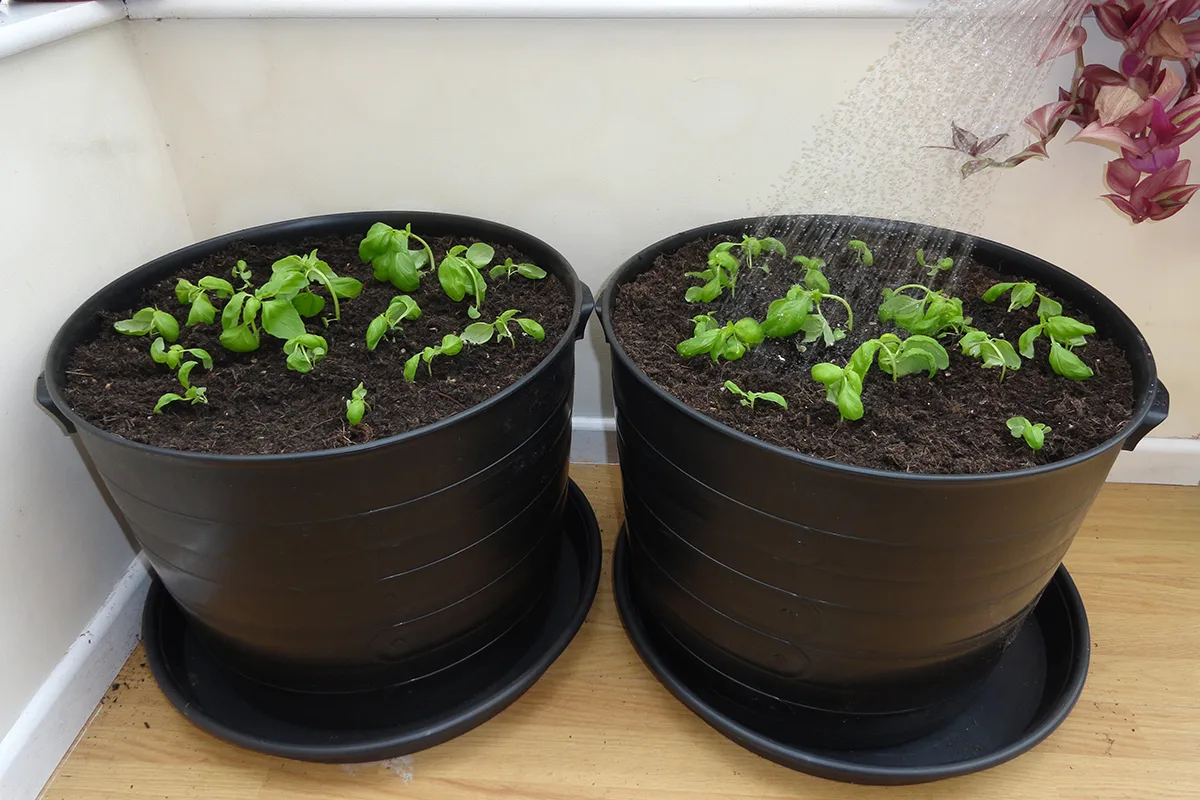
Immediately after planting, you will need to water them from above and if they look a little wilted until those first few roots make it down to where the water is.
Our master grower also notes that watering once the plants have established roots is as easy as topping up the saucer mentioned earlier. This leads to another important factor.
Water From Below & Allow the Plants to Sit in the Water
The next important step in the process, he says, is to allow the containers to sit in large water-filled saucers so that the plants can access it from below. This forces the plants to send their roots down deep to get water, much like when grown directly in the ground.
I know houseplant owners everywhere are “screeing” at this mental image.
Generally speaking, allowing any potted plant to sit in water is a big no-no. But in this case, it makes perfect sense because of how much water the plants use.
He gave us a few key notes about watering the basil plants this way.
- Starting your seedlings in extra large pots and watering them from below forces the plants to send down deep roots.
- He only waters from above if the seedlings look a little wilted or, later in the season, if the top inch of soil becomes crunchy and dried out.
- Let the plants use up all the water in the saucer before adding more. This keeps the water from growing stagnant. This practice also prevents root rot when the plants are still very small, and their root system is still developing.
- He noted that during the height of the growing season, in August through September, the plants would often go through roughly 1.5 gallons (6 liters) of water on cool days and close to 3 gallons (12 liters) of water on hot days.
You know all those reminders you get to water plants in containers more often when it’s hot out? This is why. It’s also why it makes sense to leave the basil sitting directly in water all the time.
Fertilizing Regularly is an Important Factor
Our grower opted to use a fertilizer meant for tomatoes on his basil. This makes perfect sense, as most tomato fertilizers are heavy in nitrogen, a key nutrient needed for leafy growth. Unfortunately, his chosen fertilizer, Levington Tomorite, isn’t readily available here in the states. However, the NPK ratio for Tomorite is 4-3-8, similar to Espoma’s Tomato-Tone formula. If you want a liquid fertilizer, as he used, try Fox Farm’s Grow Big.
The Master Grower said he adds the fertilizer directly to the saucer.
At the beginning of the season, he said he only adds it once every few weeks. The plants won’t need a lot of fertilizer in the beginning as they’re drawing nutrients from the compost and aren’t large enough to require extra nutrients yet.
However, increasing the frequency with which you fertilize as the season progresses and the plant grows is important. Remember, we are keeping our closed system consistent, so as the plants grow larger, they will deplete the soil of nutrients quicker, needing more to sustain their growth. He notes that toward the end of the growing season, he fertilized the plants weekly.
Finally, the Importance of Pruning
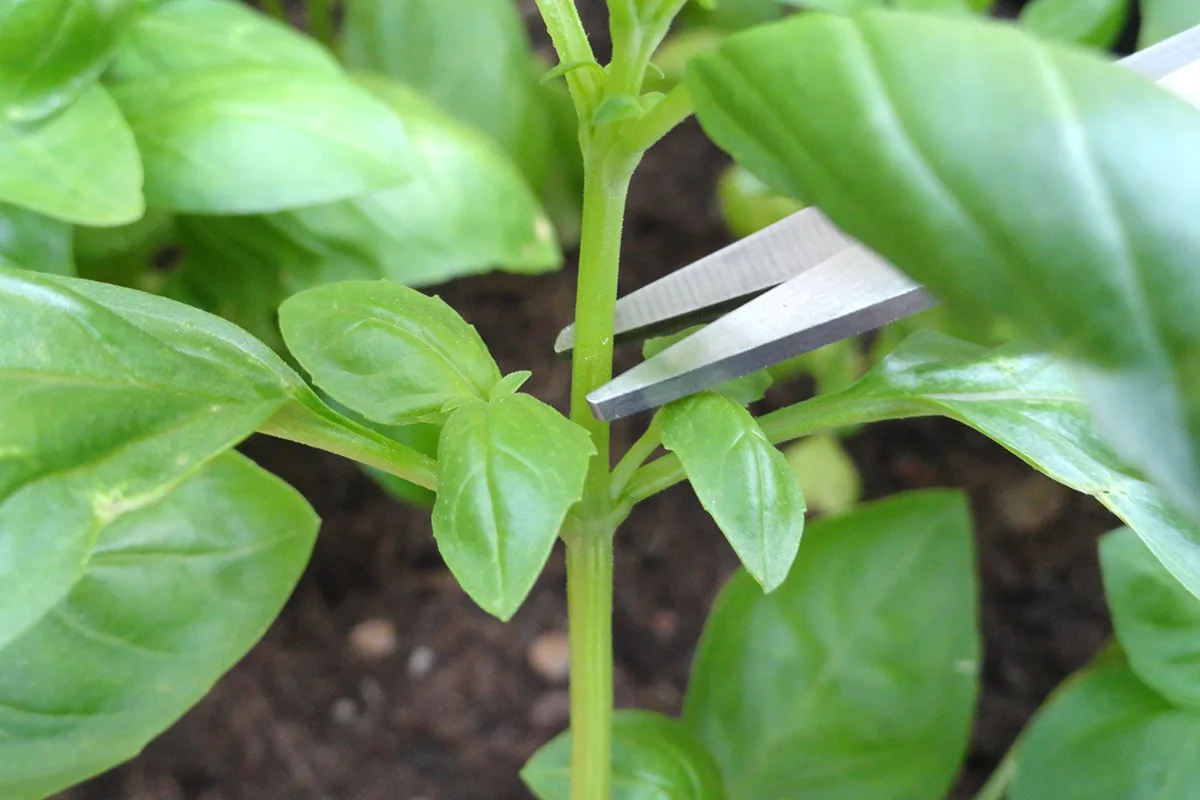
Pruning is incredibly important when you want to encourage a plant to grow wider and bushier. If you’ve never pruned basil before, I’ll bet you didn’t even realize growing basil bushes was possible.
Our Basil Expert ascribes to the same method for pruning basil that we do.
Once the basil seedlings are well established, and the plant begins to put out lots of new growth, it’s time to start pruning. You will prune the basil throughout the entire season.
In the beginning, our grower said he pruned every two to three weeks to encourage the bushy growth attained by this pruning method. Later in the growing season, he pruned weekly to prevent the plant from flowering and going to seed.
A quick guide on how to prune basil
As basil is part of the mint family, it has a square stem. Look below the first group of leaves at the top; you should find four tiny new leaves growing at the corners of the square stem. Using clean scissors, snip the stem just above these new leaves.
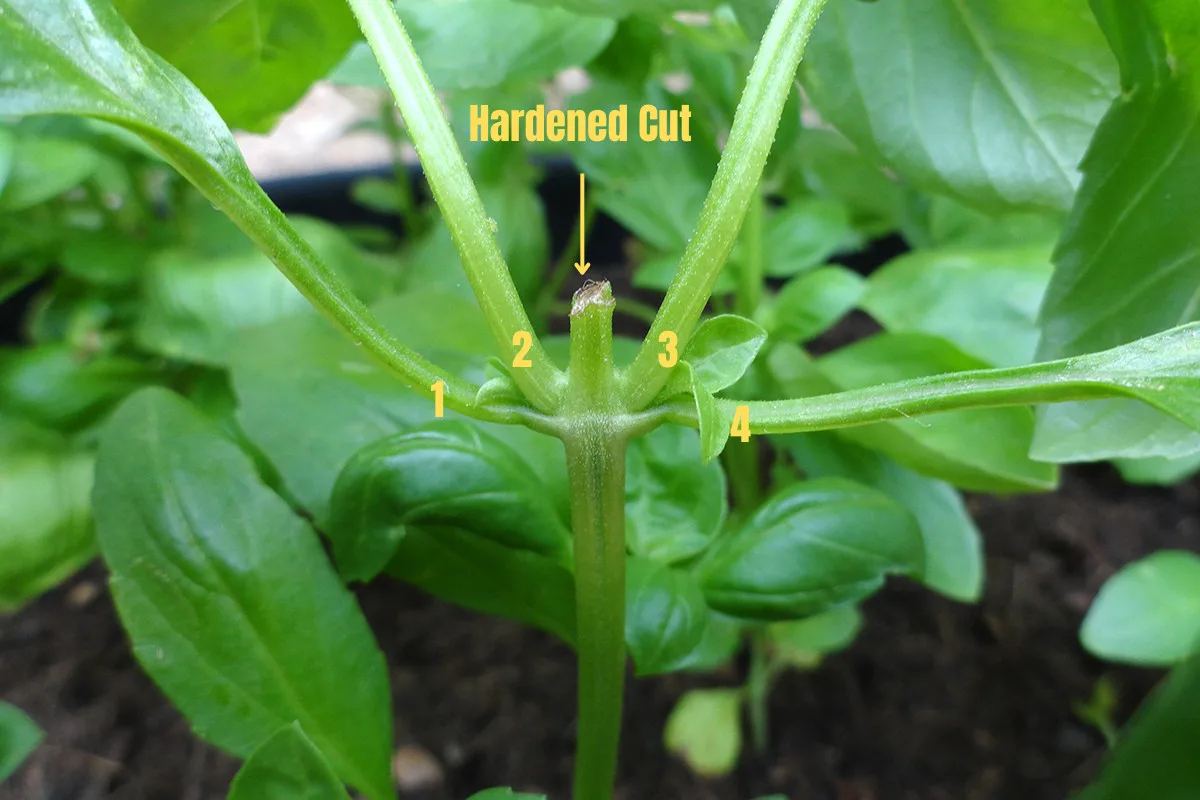
In a few days, the cut will harden, and the plant will focus its energy on growing those four new leaves. We are taking one stem and turning it into four new stems. This is what leads to bushy basil plants.
Prune the basil plants frequently.
Our expert says he would check the plants often, and if he saw a stem that he could cut (with four new leaves starting), he would do it there and then. Make this process easy by keeping scissors to hand near the basil plants. To prevent disease, consider only using them on your basil and clean and sterilize them often.
Staking Your Basil
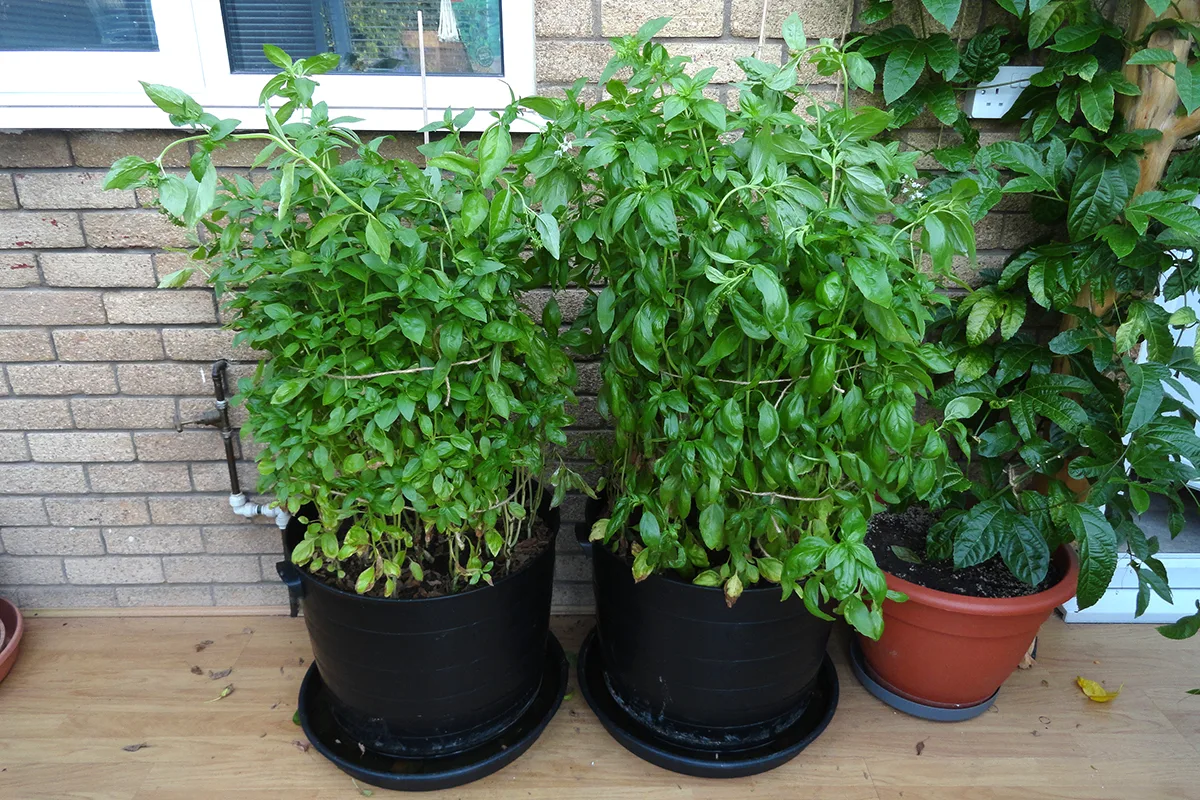
There’s a phrase I’ll bet you never thought you would read. However, if you use our expert’s method, you will eventually need to stake your basil as it grows. Basil stems can easily fall over and snap under their weight.
He uses plain twine and bamboo dowels to stake the basil. His wife was kind enough to model the process.
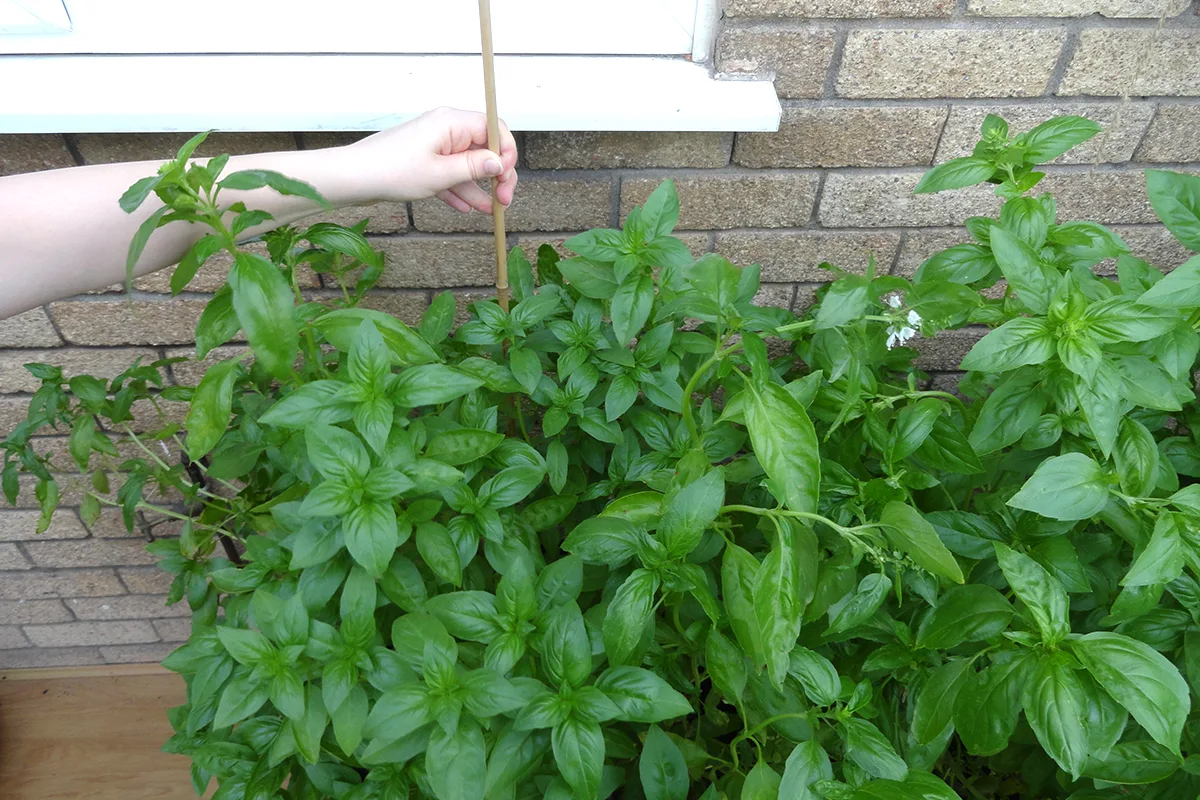
The dowel is placed at the back of the pot.
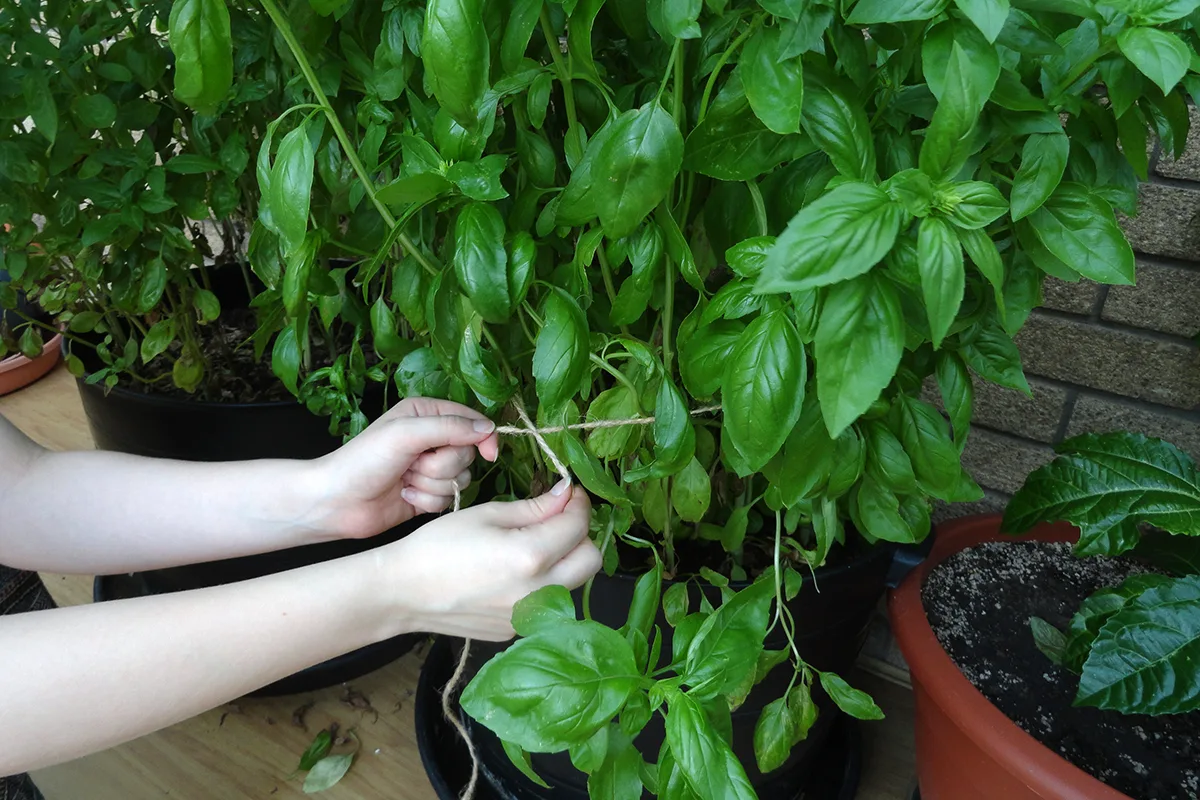
Then he encircles the lower portion to encourage it to grow upward, going around the dowel.
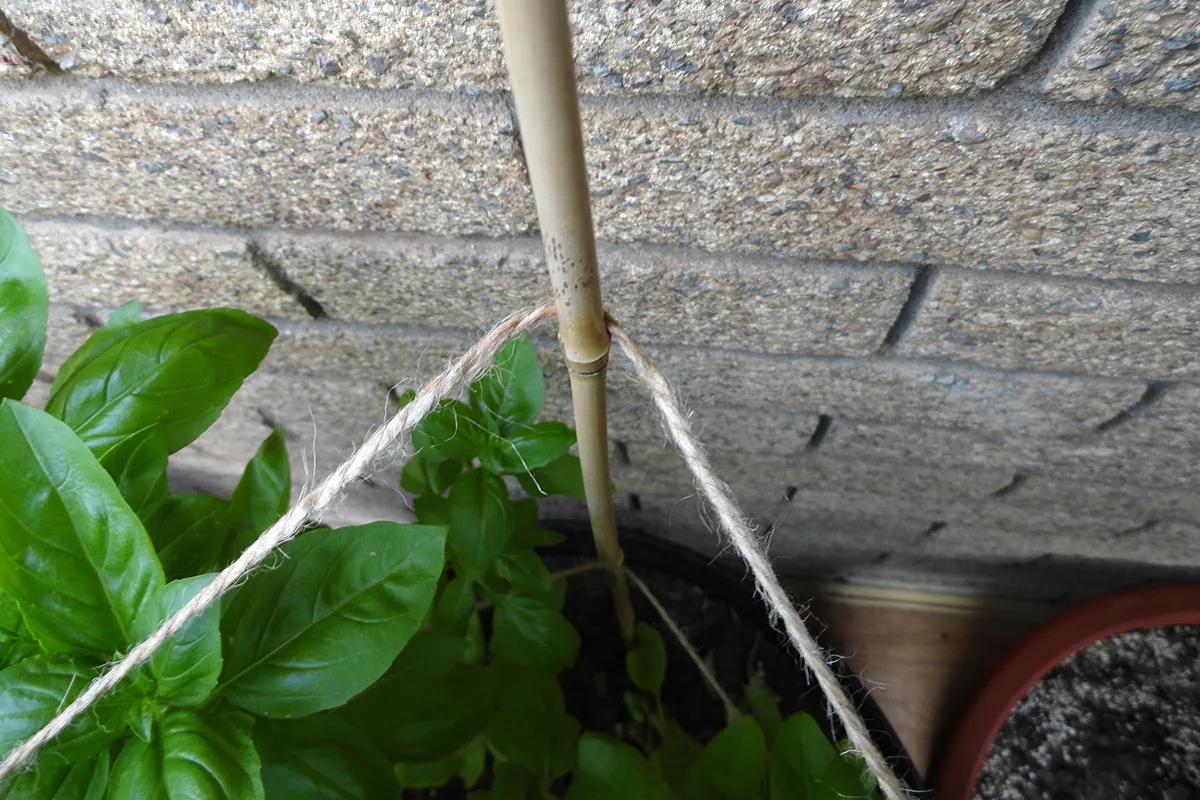
Another circle of twine is added every few inches as the basil grows taller.
There’s a lot of information here, which can feel overwhelming.
But I’ve been reviewing our grower’s notes repeatedly, and it seems that the secret to his annual success is that he has corrected all the ways we normally inhibit growth in containers. As I reread this case study, I found myself wondering what other plants would reach stratospheric growth under these conditions. Hmm…
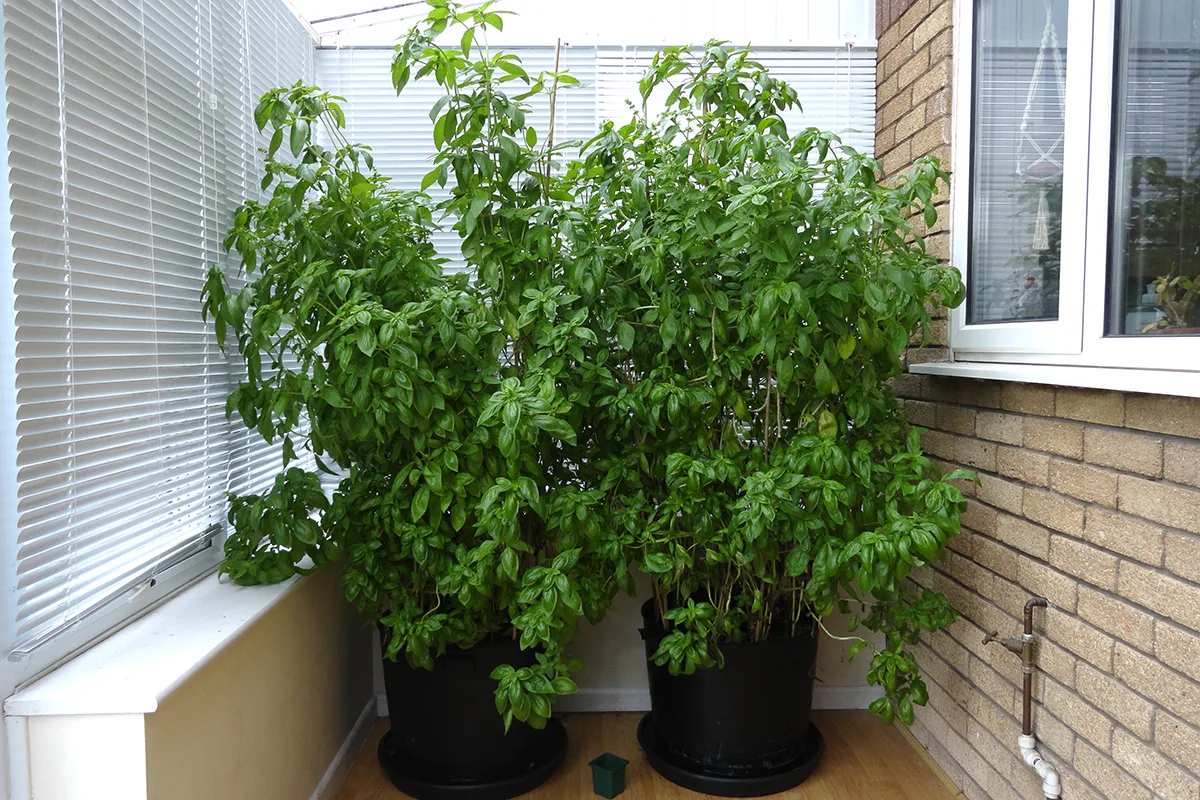
Everyone at Rural Sprout would like to thank our superstar Basil Growing Master for his willingness to share his method with our readers and his photos which make the entire process much easier to envision.
Why not try growing your own monster basil? You might need some clever ways to use up all the leaves that goes beyond pesto.
Read Next:

Get the famous Rural Sprout newsletter delivered to your inbox.
Including Sunday musings from our editor, Tracey, as well as “What’s Up Wednesday” our roundup of what’s in season and new article updates and alerts.


